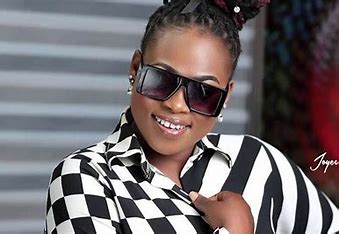How trans singers adapt to their changing voices
Written by ABR on 26/12/2022
2022 has been the huge year for trans people in the music industry. But, despite the growing profiles of acts like Kim Petras, Ethel Cain, and Christine and the Queens, there still exists a degree of mystery around what trans artists might go through professionally as they transition — and this is nowhere more apparent than in their relationships with their singing voices.
Trans people might have made their way into more record collections, but this increased exposure doesn’t always come with increased outside understanding of their lived experiences. “What I’d like cis people to learn about trans people is that we’re very diverse,” says gender theorist and musician Julia Serano. “I have had people tell me they didn’t know I was trans because I didn’t sound trans. What does that even mean?”
Testosterone can provide trans-masculine people with a remedy to vocal dysphoria, but for trans-feminine folk, while the effects of oestrogen are extensive, they don’t include the ability to ‘unbreak’ a voice that’s been through male puberty. Those who transition early, like German popstar Kim Petras, can avoid this using puberty blockers, but those less lucky are forced to find solutions elsewhere. Speech therapist Christella Antoni says that for some people, surgical intervention can be the right solution.
“Often, trans women are looking to lose the ability to hit some of those bass notes, and for that, surgery really does work,” she says. “But there is a trade off in terms of power and the ability to project. For singers, I would definitely suggest seeking the voice therapy route first before considering surgery.”
Subscribe to i-D NEWSFLASH. A weekly newsletter delivered to your inbox on Fridays.
Christella’s therapeutic methods have helped hundreds of trans women across the UK to improve their vocal range, but she’s quick to debunk the misconception that it’s all about pitch. “People will often try to just change the pitch of their voice, and that doesn’t work,” she says. “It requires a full guided course looking at not only pitch, but resonance too.”
Melbourne-based bedroom pop musician Katie Dey has never undergone any vocal training, but has become more comfortable with her singing voice thanks in part to the use of electronic vocal manipulation. “When I started out making music under the name ‘Katie Dey’, I was freaked out by the idea of people clocking me by my voice or using my identity against me if they found out I was trans,” she says. “Dysphoria can intertwine with other people’s perceptions of you, and I wasn’t strong enough to be out and proud and put myself against the type of scrutiny trans people are put under.”
The role other people’s perceptions play here can’t be overstated. According to Julia Serano, listeners often hear what they expect to hear. Of her time in Bitesize, a band she fronted alongside a cis woman, she says: “People just decided whether it was boy-girl vocals or girl-girl vocals, especially in the late 90s, when we were sending around cassette demos with no pictures of us. They just made up their minds listening to the songs, then whatever determination they made would be their expectation.”
These outside expectations — and especially those of cis people — can feel complicated for trans artists, and Katie is no exception here. “Cisnormative expectations can weigh on me a bit,” she admits, “but I suppose the way I use my voice will always be outside of someone’s expectations. I used to be a lot more troubled by it but I’m more at peace with it as I get older. Maybe someday I’ll experiment with sounding super masc – it might be fun to mess with people.”
Manchester-based trans-masculine artist Florian Le Hunte, who performs as part of goth band Moth Slut and solo project Emo Cringe Compilation, has been on their own journey of acceptance. “Frankly, I’m at a point in my life now where I know what my artistic practice is and who it’s for — and it’s by and for trans freaks. I couldn’t give less of a shit if cis people don’t understand the way my voice changed. My voice sounded bad for a while — my range shrank hugely, but all my friends were so excited for me that it allowed me to be excited too, to realise that my fear of changing was only holding me back. It’s a strange contradiction feeling so much happier with my voice while knowing that it’s nowhere near as technically good as it was before.”
Christella confirms that a reduction in vocal range is common in trans-masc singers. According to Nye Todd, former member of Scottish DIY band The Spook School: “I could definitely sing much better before testosterone so that’s been a bit of a loss. There were things I found easy before, like thinking of a vocal harmony and singing it straightaway, that I can’t really do now, though I’m sure there would be ways to relearn those skills.” Nye made a series of singing videos to document his changing voice, expecting the process to be incremental, but as he puts it “It was pretty much nothing for six months and then a quick and drastic change”.
Musician and YouTuber Noah Adams — who makes music as NOAHFINNCE — had a similar experience. “Our voices don’t gradually drop like they do for cis guys going through puberty,” he says. “My voice dropped within about nine months. I was super worried about how my singing would be affected, but I knew feeling comfortable with myself was more important than singing high notes.”
Over time, technical proficiency can start to feel immaterial. “If I use my voice in a very ‘technical’ mode I can definitely sing ‘better’, but it’s not how I want to sound,” Katie says. Nye, meanwhile, goes as far as to say that he’s never identified himself as a singer: “It was always just a way to convey the lyrics and meaning — and I can still do that and people still seem able to connect to the music.”
Whether through hormones, surgery, vocal training, or pure experimentation, every transgender singer works hard to find their voice. This process of discovery is as much about attitude as it is about technique. “At first, people are often scared to sound like they’re ‘putting on a voice’,” Christella says, “but if they’re a performer, that usually means they have more confidence to start speaking or singing differently.”
“I’ve found a way of singing that feels distinctively me,” echoes Julia, “and that’s a good takeaway even for a cis person”. Transition is a life-long project, and when it comes to the voice, there are countless routes an artist can take. No two transgender singers are the same, but their stories often begin with them losings their inhibitions, leaving cis expectations behind, and putting themselves first.



 ABR Group
ABR Group